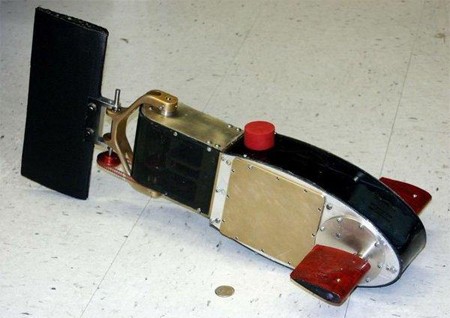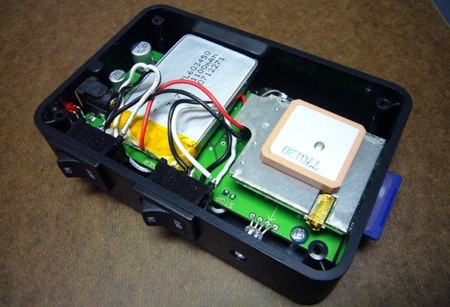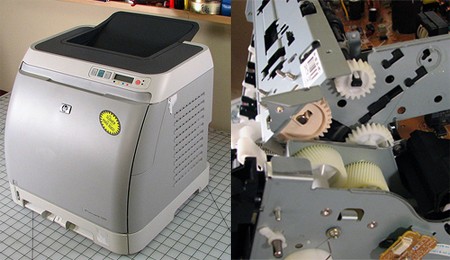
We’ve served up dozens if not hundreds of machines with a practical purpose, but we are always interested in machines like those [Steven Laurie] makes, which serve no other purpose than looking impressive, spewing smoke, leaving tire marks, and making a lot of racket. We’ll give you the scoop on Steve’s motor art after the break.
Author: Juan Aguilar160 Articles
Robofish > Real Fish

This is the kind of engineering that gets us excited, and not just because we like machines modeled on living things. Science Daily reports that Associate professor [Kristi Morgansen] from The University of Washington has developed these robofish for underwater data collection. Her technology is notable for two major reasons: the small robots use fins for locomotion instead of propellers, which reduces drag and creates greater maneuverability. The second and more important reason is that the robofish can communicate with each other via sonar, largely obviating the need for the robofish to surface for more instructions. Both design concepts were inspired by the shape and behavior of real fish. Currently the robots are only programmed to swim with or away from each other, but these are still prototypes and the technology looks promising. For more tech specs on these “Fin Actuated Autonomous Underwater Vehicles” (see why Robofish is better?), you can have a look at Morgansen’s notes.
Tips On Picking The Right Case

Finding the right enclosure to house your latest project can be tricky, so Sparkfun wrote up some handy tips on the how to pick the right one.
The most important tip is to have your components measured before acquiring a case; even being a few milimeters too small can put you back at square one. To do this right, it’s useful to look at the dimensional drawings of prospective cases to get a sense for the size. These typically include recommended shapes for PCBs too.
You may find a case that meets your dimensional needs but doesn’t have the appropriate mounting bosses. To get the placement right, screw some plastic standoffs to the PCB, then use super glue to attach them firmly to the case.
Tips on button choices, hole drilling, and other typical issues with case modification can also be found in this guide. If this is something that’s been stumping you, give it a look.
Wheels And Weed Whackers

Perhaps you’ve seen this image before: a young kid tooling around on a pair of inline skates, pushed forward by a weed whacker cycle. While the instructions for this device would seem fairly obvious (attach wheel to weed whacker) the writeup appears to be nonexistent. If you have any information, do let us know, but in the meantime, enjoy these other weed whacker powered projects.
Bionic Senses

Various cybernetic limb and organ replacements were recently featured in IEEE’s flash demo called The Bionic Body Shop, but we were most interested by the bionic eye and the cochlear implant (we already discussed the featured powered exoskeleton). These are notable for the fact that they are not merely high-tech prosthetic replacements strapped to or worn on the body, but implants that are housed within the body and work with flesh-and-blood sense organs on a much closer level than any preceding technology.
HP Color LaserJet 2600n Teardown

In the ongoing quest to find parts for new projects by scavenging old devices, the curiously sane and benevolent team at Evil Mad Scientist Laboratories took apart an HP Color LaserJet 2600n. They wanted to see what makes it tick and what parts can be culled from it for later use.
Building A MIDIbox SID

We’ve discussed MIDIboxes before (and once before that), but we’ve never really told you what goes into them or how to build one. We’ll take you through the process after the break.










